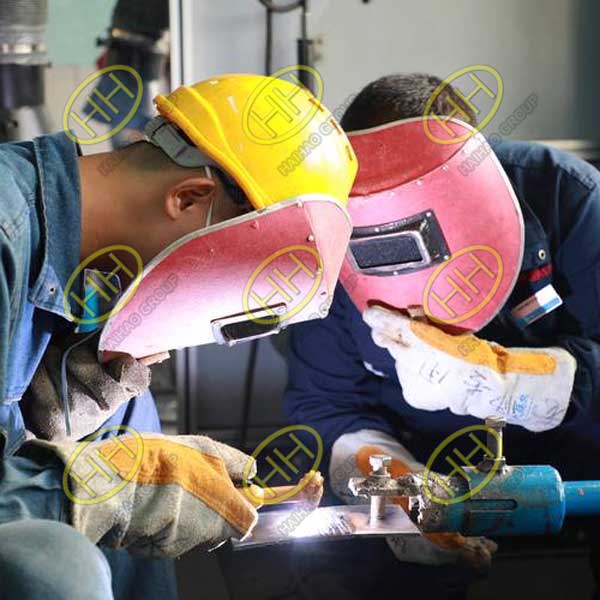Key Considerations for Welding High Carbon Steel
High carbon steel presents significant challenges in welding due to its high hardenability and susceptibility to cracking. To ensure strong and defect-free welds, the following precautions should be taken:
1.Welding Thin Plates (≤5mm Thickness)
For workpieces with a thickness of 5mm or less, no groove preparation is needed. Instead, welding should be performed from both sides using a straight-line oscillating motion with the electrode. This ensures proper fusion and penetration while minimizing distortion.
2.Multi-Layer Welding for U-Shaped or X-Shaped Groove Joints
The first layer should be welded using a small-diameter electrode with a straight-line movement, ensuring deep penetration along the groove root.
For subsequent layers, the welding technique should be adjusted based on the width of the weld. A circular weaving method can be applied.
Each weld layer should be maintained at 3–4mm thickness, and after completing each layer, all slag and spatter must be removed before proceeding to the next layer.
When welding an X-shaped groove, welding should be performed alternately on both sides to prevent warping of the workpiece.
3.Preventing Hardened Microstructures in the Heat-Affected Zone (HAZ)
To reduce cooling rates, welding speed should be decreased, allowing the weld pool to cool slowly.
Multi-layer welding helps temper the previously hardened layers. The heat input from the later passes partially tempers the hardened zones of the earlier welds, reducing brittleness.
However, the final weld bead may still create a hardened layer near the fusion line. To counter this, a “tempering weld” should be applied. This means the last weld bead should be deposited along the weld center, avoiding direct contact with the base metal. This prevents the formation of hardened zones on the base metal’s surface.
4.Tack Welding & Arc Striking Precautions
Small-diameter electrodes should be used for tack welding to ensure full penetration.
Due to high carbon steel’s high crack sensitivity, tack welds should be longer and spaced closer together than those used for low-carbon steel. The height of tack welds should not exceed the main weld bead.
Arc striking should be done at the leading edge of the weld pool, not directly on the base metal, to prevent cracks. After striking the arc, the electrode should be moved back to the original molten pool before proceeding forward.
At the end of the weld, the crater should be completely filled, and the deposited metal should be slightly higher than the normal weld surface to prevent crater cracks and porosity.
5.Post-Weld Heat Treatment
After welding, the workpiece should undergo a tempering heat treatment at 600–700°C to relieve residual stress and prevent cracking.
By carefully following these welding precautions, the risk of cracking, brittleness, and defects in high carbon steel welds can be significantly reduced, ensuring strong and durable joints.

